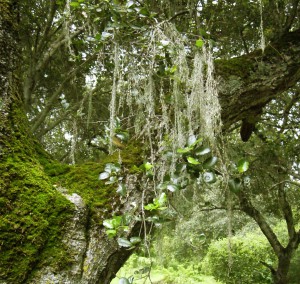Elaine Pagels gives this summary of the events leading up to Easter Sunday:
“Jesus’ passionate and powerful presence aroused enormous response, especially when he preached among the crowds of pilgrims gathered in Jerusalem to celebrate Passover. As the Jewish and Roman authorities well knew, tensions were high during the religious holidays when Jewish worshipers found themselves face to face with the Roman soldiers. Jesus’ near contemporary the Jewish historian Josephus, himself a governor of Galilee, tells of a Roman soldier on guard near the Temple who contemptuously exposed himself before just such a crowd, an outrage that incited a riot in which twenty thousand died. When Jesus dared enter the Temple courtyard before a certain Passover, brandishing a whip, throwing down the tables of those changing foreign money, and quoting the words of the prophet Jeremiah to attach the Temple leaders for turning God’s house into a ‘den of robbers,’ the Gospel of Mark says, ‘he would not allow any one to carry anything through the temple’ (Mark 11.16). But soon afterwards the authorities took action to prevent this firebrand village preacher from fanning the religious and nationalistic passions already smoldering among the restless crowds. The Jewish Council, eager to keep the peace, and hoping to avoid recrimination from their Roman masters, collaborated with the Roman procurator to have Jesus arrested, tried, and hastily executed on charges of having threatened to tear down the Temple single-handedly, and having conspired to rise against Rome and make himself king of the Jews (Mark 14.58-15.26).
“Jesus himself, according to the New Testament, saw himself very differently, not as a revolutionary but as a man seized by the spirit that inspired Isaiah and Jeremiah — the spirit of God — as a prophet sent to warn humankind of the approaching Kingdom of God and to offer purification to those who would listen. Repeatedly, according to the New Testament accounts, Jesus chose to risk death rather than allow himself to be silenced.” Adam, Eve, and the Serpent (New York: Random House, 1988), pp. 6-7.
Based on this Easter reading, here are two my two Easter thoughts this year:
(1) In today’s Western culture, religio-political leaders (and politico-religious leaders) like to style themselves as successors to Jesus, and followers of prophets like Jeremiah. However, history tells us that we have seen very few such leaders who actually were successors to Jesus, and many more who were instead successors to the Jerusalem’s religious leaders who were tools of the Romans. The difference between the two? Jesus answered to moral truth and to a God of humane justice; Jerusalem’s religious leaders answered to political expediency and to their political puppet masters.
(2) After Jesus was executed on trumped-up political charges, Jesus’s message was not silenced. Maybe it got seriously transmogrified by later philosophers (Augustine and Paul come to mind), but if we listen carefully we can still hear Jesus’ basic message of righteousness and humanity. Two thousand years later, that message is still very much alive; Easter is a good holiday to remember that message, and to remind ourselves to look for the strings by which many religious leaders are controlled by their puppet masters.

